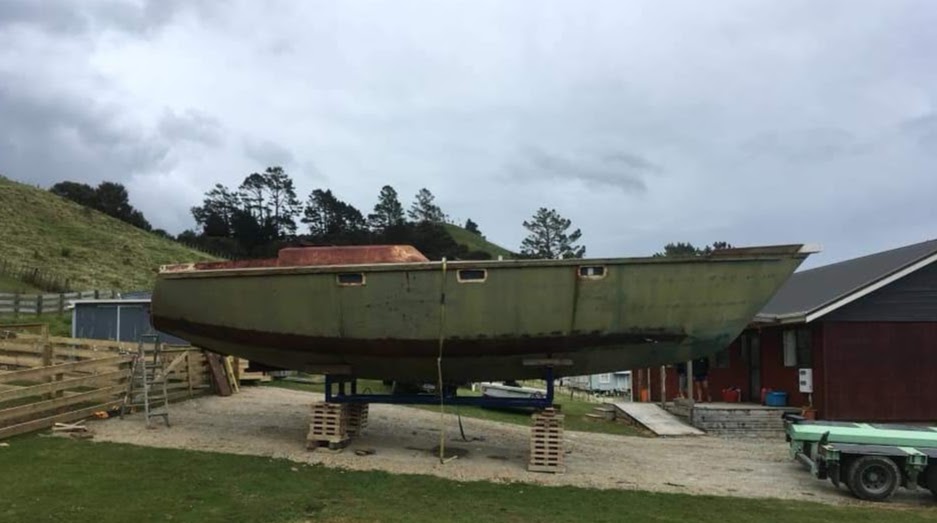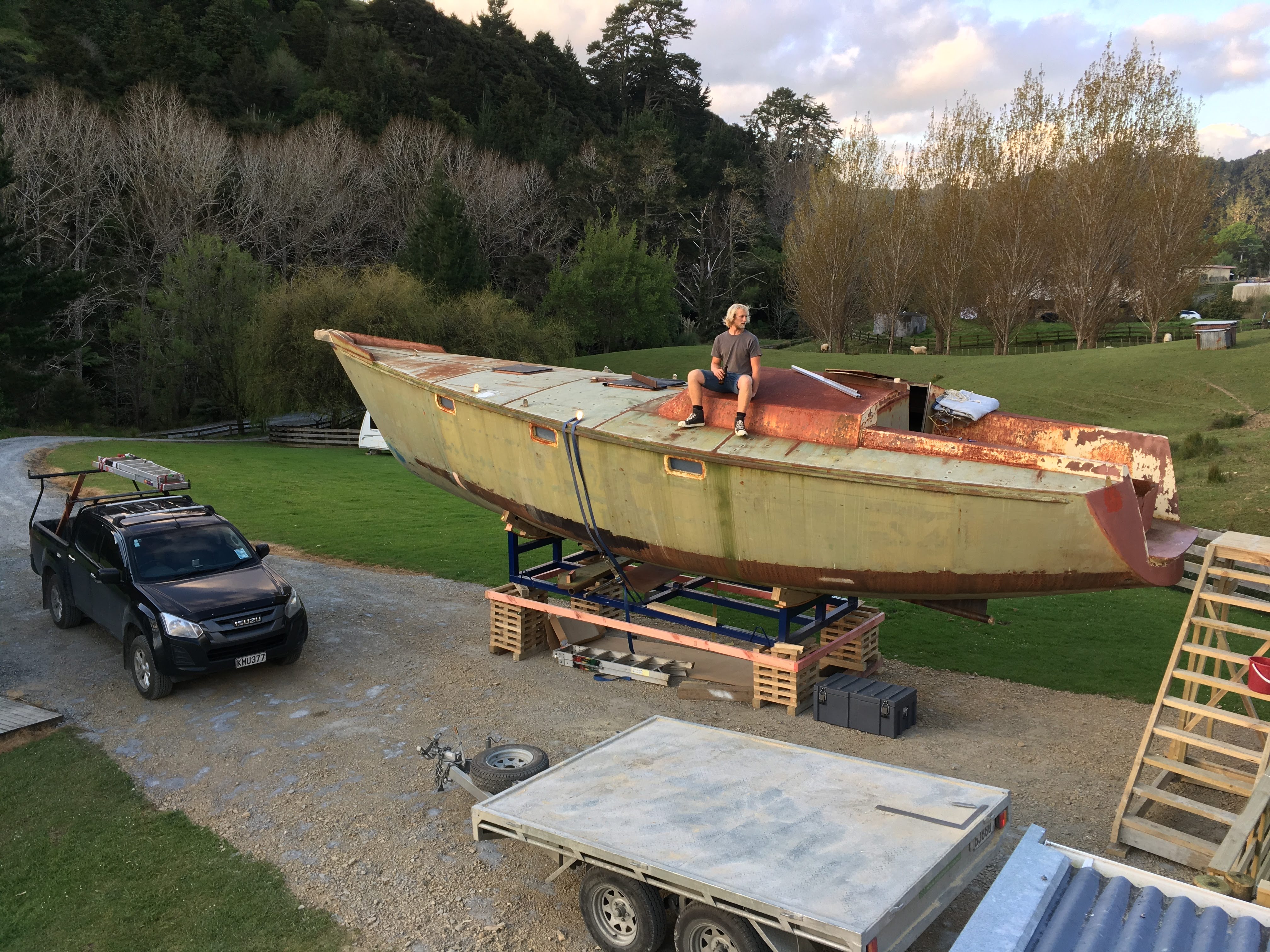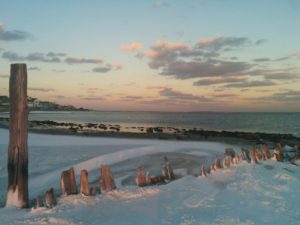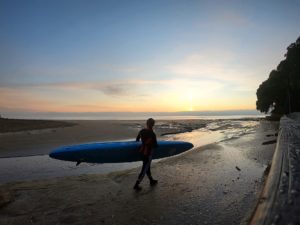Whilst I often blog about my efforts to minimize my impact on the planet and share interesting things I have seen on the ocean, I usually share this information with the hope that I can inspire others to want to lead a lower impact life, because in reality all my actions are fuelled by my love for the sea and desire to protect it. Some changes I have made in my life, like quitting plastic, began after I strengthened my connection with the ocean. At one point I was living on a boat on the sea, travelling across it almost daily, working on it sailing, paddleboarding and swimming on it and when it finally came time to rest, I was even sleeping on it. My life revolves around the ocean.
This big project that Ben and I have embarked on is no different, it is driven by the passion we have for the ocean, to explore it and protect it. I was wondering how many others have this dream? Have you ever dreamed of sailing into a sunset, or imagined yourself sitting in the cockpit at the helm of the vessel?


When I dream, I can almost see myself looking up at the tell tales, one hand on the helm. There’s a nice breeze filling the sail and carrying you all the way to your destination. When you arrive at this dreamy location imagine you’re the only boat in the bay, and the boat you’re on, in this dream it is yours. I reckon that’s in many ocean lover’s dreams; it is the sailor’s dream.
We know we’re not the only ones that dream of sailing and living on the water but the with progress we have made this year we finally feel more or less like we are pursuing our ideal lifestyle with hard work and determination and we’re not just dreaming.

Boats are seriously amazing, but being at the helm of your own with someone you love, with some sails up truly “living the dream,” well it’s still a dream now, but should be our reality, one day.
Just over a year ago my boyfriend, Ben, out of the blue, came to me with a brilliant idea: “lets build a yacht.” A mere few months later Ben had sold the boat we lived on, and bought this beautifully shaped hull pictured below.

If your dream was to sail around in the big blue ocean, is this how it starts? Well, not for everyone, but its pretty realistic for a salty couple that loves the sea. Just to give you some context, Ben and I were living on a boat around this time, just over a year ago. The boat was berthed in Gulf Harbour Marina where Ben had the boat for 3 years, and we had lived on it for the last two.

The lovely old trawler, an ex-Cray boat called Okawa II, was in need of many repairs and upgrades. While she could be fixed, we were after a more permanent solution to our boating dreams, we needed a sailboat. Okawa II had a reliable, quite economical diesel engine, but for long distance travel we want to be able to harness the power of the wind and a live on a boat capable of traveling to the Pacific Islands and beyond. A sailboat creates endless opportunities for those kind of adventures!

Over a month or two, it was decided, Ben purchased this incomplete steel yacht hull which was someone else’s boat building project over 20 years ago in Whangarei. The boat arrived on a big truck to a quiet place down a gravel road in Puhoi, and that is where the story of S.V. Miss Conduct begins.

So where do you start when building a boat? At the bottom? While that seems logical, sorting out the bottom of the boat wasn’t a simple thing. The plans for the keel needed to be ‘drawn’ into CAD, so that the steel could be professionally cut into perfect shape by a water jet cutter. Not to mention that we needed to earn the money to purchase the new steel then even more (a lot more) money to buy lead to melt inside it!

Before we could focus on the actual boat build, Ben needed to set up a workshop in the shed and acquire the proper tools so he could work on building pieces for the boat.

The big picture of building a boat is a bit daunting but one day at a time we started to tackle the rust on the outside of the boat first. To do this we used a water blaster with a custom-built (by Ben himself) hopper for garnet. This wet ‘sandblasting’ method has enabled us to get rid of lots of rust, then we dry the steel, wipe it down with paint thinners and finally put a coat of primer on it (we use PPG which is a gray-colored two-pot epoxy based paint).


Eventually, we got the money together to purchase the steel and lead and so the keel moved out of the shed and over next to the boat with the use of our neighbour’s digger!

Filling a keel with lead isn’t exactly light work. There is 2.5 tonnes of lead inside the keel itself which alone weighs about 500kg. All the lead ingots were moved by hand, some got stacked inside where they would fit tightly without melting, and the rest got melted and hand-poured into the keel. Melting the 10kg bricks one at a time in a stainless steel pot with some extra long handles welded on and then lifting and pouring the lead into the keel was quite a tedious process which we are glad to have completed over the course of three days with a few helping hands.




The boat had to be moved off its cradle and then the keel had to be moved into place and then the boat had to be perfectly placed on top of the keel. It was a milestone day! It was probably the most stressed I’d seen Ben throughout the whole project, I mean moving the boat and getting the placement of the keel and everything lined up right was a big deal. We had a hiab on site which also delivered a container for tool storage etc.

After the boat was in position, it took a lot of fine-tuning; lowering, then lifting, repositioning, over and over in order for the keel to sit perfectly in place below it. It was hectic because as soon as the boat was placed over the keel it started to rain and the water ran down the side of the boat and through the gap between the hull and keel! It quickly started to drip into the cavity above the lead in the keel, this space will be a tank for diesel storage later on down the track. But we certainly didn’t want water getting in there. We can laugh about it now but that was a stressful few minutes trying to prevent the water from running down the hull like a waterfall! Meanwhile, Ben got the blowtorch out to dry it in order for the tape to stick and cover the gap up to prevent further leakage.
After a few days of intermittent welding by our mate Terry B and she was officially a boat with a keel. The skeg was in position and the next step was to enclose the hull in a tent. It was decided that the next step would be to take off the existing cabin top and build a pilot house as per the Ganley Cape Brett design instead of carrying on with the build of a Ganley Pacemaker which is what the previous owner had originally intended. Doing it this way will take more time however, this choice enables us to drive from the helm inside the pilot house or outside in the cockpit, which makes for more comfort in bad conditions I’m sure! And the pilot house design is roomier, and with windows from which you can look out at eye level when you’re standing midship.

We thought long and hard about what would be used to cover the boat in order to begin cabin top construction. Ben was totally agreeable when I piped up in resistance to shrink wrap and so we looked for alternatives. Eventually, we got a hold of two old billboards which together, were the perfect size to glue together and fit on top of the boat!

I could go on for days about the things we have done and learned about the boat so far but there is still plenty more to go and more time to write about S.V. Miss Conduct, another day!

One year has passed since the purchase of the hull, and the boat has come a long way. I am so very proud of Ben and the progress which is fueled by his hard work and determination to get to the water in this beauty of a boat. We are also extremely grateful for help from a few friends that have made this experience so far even merrier. The boat build has its own facebook page too. Check out S.V. Miss Conduct on Facebook, and the brand new @svmissconduct instagram page we would love to share our journey with you!




